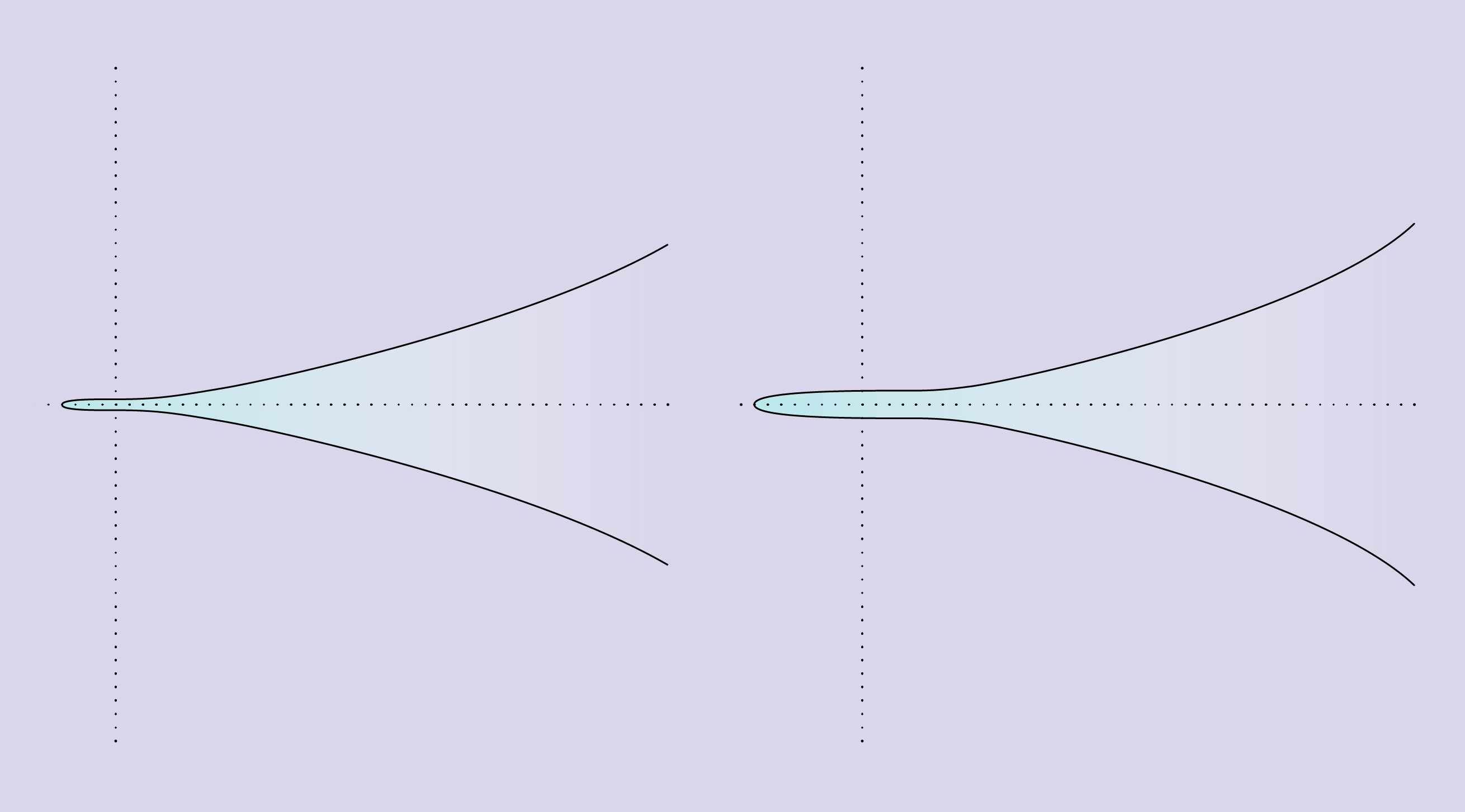New evidence demonstrates the existence of two types of infinite curves.
The work of Alexander Smith on the Goldfeld hypothesis revealed the fundamental properties of elliptic curves

Two elliptic curves demonstrate the strangeness of the concept of rank. The curve on the left is described by the equation y 2 = x 3 + 1, passes through only five rational points and has rank 0. The curve on the right is described by the equation y 2 = x 3 + 8, passes through an infinite number of rational points, and has rank 1.
There are many variants of elliptic curves, but there are only two real variants. This is the result of new evidence obtained by a graduate student from Harvard University.
Elliptic curves seem something exotic, but they are unremarkable geometric objects, no more difficult than straight lines, parabolas or ellipses. In his work , published online last year, Alexadr Smith proved a 40-year-old hypothesis regarding the fundamental feature of elliptic curves, rank. Smith proved that of a certain family of curves with one characteristic, half have a rank equal to 0, and half have a rank of 1.
This result establishes the reference characteristic of objects that have occupied mathematicians for many centuries, whose importance has especially increased in recent decades.
')
“We thought about this for more than 1000 years, and now we have a probabilistic understanding of elliptic curves. This is extremely important, ”said Shaw-W Zhang , a mathematician at Princeton University, who gave Smith advice on his work when he was still a student at Princeton.
Elliptic curves are equations with variables raised to the third power, for example, y 2 = x 3 + 1. They have been featured in many significant mathematical proofs in recent decades, including the most important proof of the Great Fermat's Theorem of 1994. Part of their importance lies in the fact that they belong to the most complex type of polynomial equations, about which mathematicians have some kind of system representation.
“Elliptic curves are an interesting case,” said Dorian Goldfeld , a mathematician at Columbia University, who proposed a hypothesis in 1979 that got his name.
The Goldfeld hypothesis makes predictions about the rank of elliptic curves. As we have described in a recent article, “ What evidence can mathematicians convince if there is no rigorous proof? ”, Rank is a measure of the complexity of a set of rational solutions of a curve (solutions that can be represented as fractions). And although there is no proven limit on the rank of the curve — so far the highest rank is found to be 28, the Goldfeld hypothesis predicts that on average half of the elliptic curves rank 0, and the other half - 1.
It may not seem clear to you how elliptic curves with a rank greater than 1 can exist, if half the elliptic curves have a rank equal to 0, and the other half have a rank of 1. If you have a box of ping-pong balls, and if you know that exactly half of they are black, and half - white, then there can not be red.
Even more confusing is the fact that there are not just a few, but an infinite number of elliptic curves with rank 2 or higher. The seemingly absurd result is the result of sly statistics working with infinities. Even though there are a lot of curves with rank 2 and above, there are so many curves with ranks 0 and 1 that curves with ranks 2 and above are not statistically significant. If you add up all the curves in a box and take them out randomly, then the chances of pulling out a curve with a rank of more than 1 are officially equated to zero.
What does it mean that the rank of the curve is 0? Such curves have a finite number of rational points - and no more than 16, as Barry Mazur proved in the 1970s.

Dorian Goldfeld
There are reasons to believe that a very large number of elliptic curves will have a rank equal to 0. If we imagine how the curve runs along a plane, it will be seen that most of the points through which it passes will not be rational. These points cannot be expressed in the form of fractions, even if arbitrarily complex. The chances that a random curve intersects a set of rational points — an infinite set — are small.
“I take it this way: if you take a random elliptic curve, then she will have reasons to have rank 0. She does not want to have rational points,” said Smith.
The prevalence of rank 1 curves is explained in a similar way. The curves of rank 1 have infinitely many rational points, but they all line up very neatly, so that you can connect them with each other in a fairly simple process.
For curves of rank 2 and above, the sets of rational points are more complex. They contain several infinite subsets of rational points that are not connected with each other.
“What are the chances of the appearance of two independent points? Said Goldfeld. - Very low. My hypothesis says that this should rarely happen. ”
When Goldfeld first put forward his hypothesis, most mathematicians considered it incorrect. They pointed to the results of computational experiments, of which it followed that curves with a rank of 2 or higher occur more frequently than in 0% of cases.
Goldfeld replied that they simply take too small a range. He pointed out that if you study only the first 10 integers, you can get an extremely inaccurate estimate that 40% of the numbers are prime. Similarly, these computational experiments extrapolated from small subsets of elliptic curves to infinitely large families of curves.
“I said look at the primes! That was my answer. You have to climb much higher, because in the beginning a lot of funny things can appear, ”said Goldfeld.
The Goldfeld hypothesis does not apply to all elliptic curves. She describes a special family of elliptic curves, quadratic bends [quadratic twists]. Example: elliptic curve cy 2 = x 3 - x, where c is some constant. By changing the value of c, you bend the elliptic curve. The Goldfeld hypothesis relates to the entire infinite variety of curves that can be obtained by changing the value of c.
Alexander Smith testified that Goldfeld was right. In the new paper, he proves that 100% of elliptic curves (of a special kind) have rank 0 or 1. He also proved that these curves are equally divided between the two ranks, although there is a catch here. His proof of the 50 on 50 division is based on the fairness of the Birch – Swinnerton Dyer hypothesis (BSD). The BSD hypothesis is one of the most famous open problems of mathematics. Mathematicians have not come close to its proof yet, but on the whole they consider it correct.
Even with such a reservation, Smith's result is considered weighty. Mathematicians say that it shows a way to fully prove the Goldfeld hypothesis, without bothering with the discouraging hypothesis BSD. This method gives a new understanding of the nature of elliptic curves.
“The work of Alex Smith is extremely interesting, and I think it has yet to be studied and honored,” said Melanie Wood , a mathematician at the University of Wisconsin. "The fact that this can be proved is very important and revolutionary."
Source: https://habr.com/ru/post/431030/
All Articles